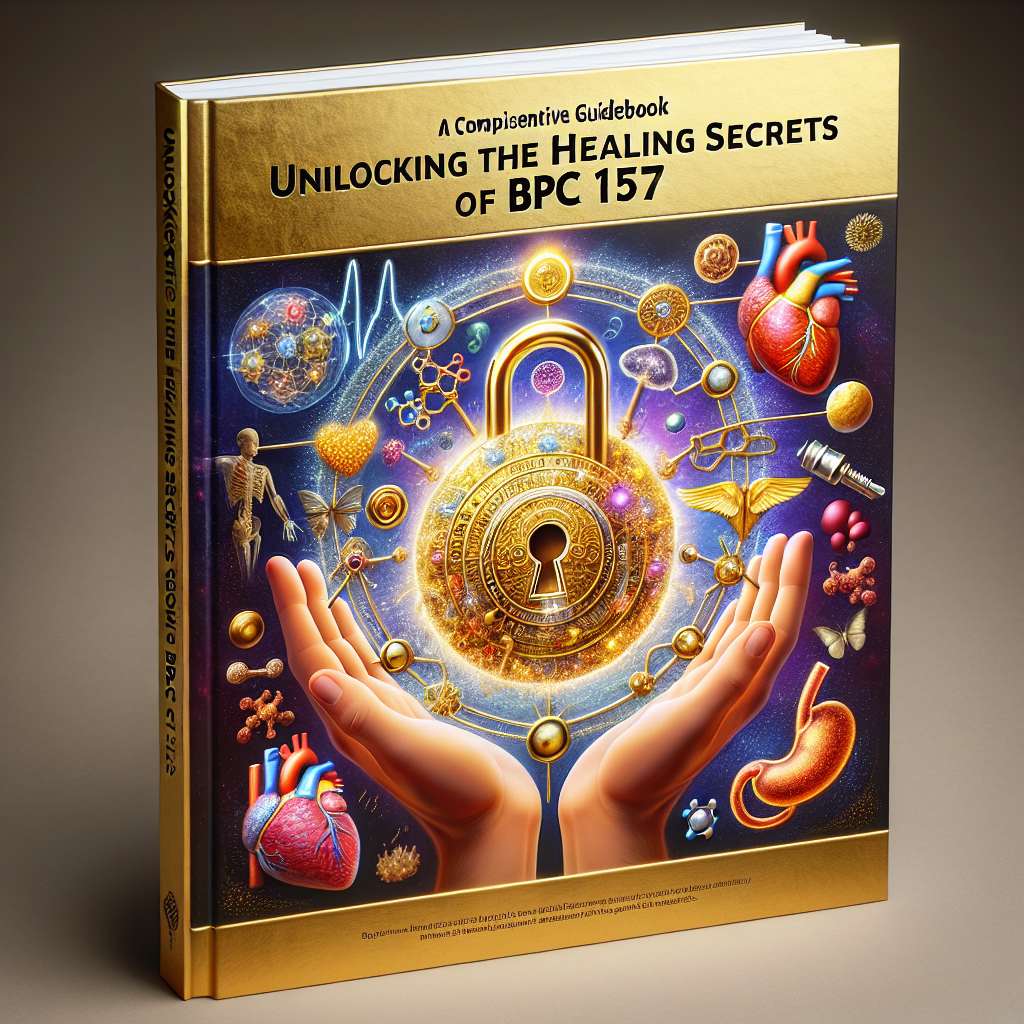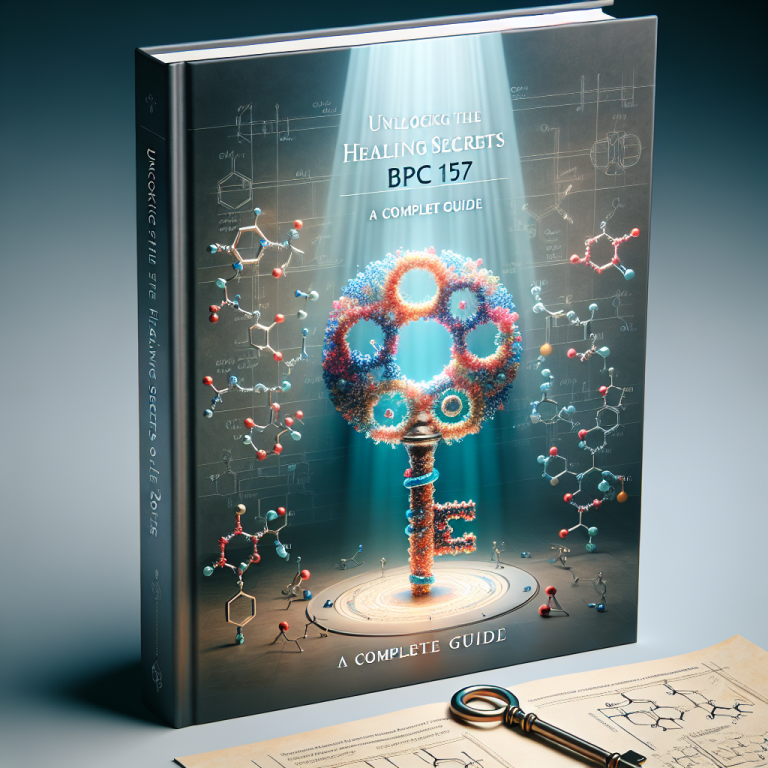Benefits And Risks Of BPC 157 In Sports Recovery
BPC 157, a peptide composed of 15 amino acids, has garnered significant attention in the sports and medical communities due to its potential benefits in accelerating recovery from injuries commonly associated with athletic activities. Originally isolated from human gastric juice, BPC 157 is often referred to as a “body protection compound,” reflecting its ability to promote healing in various tissues, including muscles, tendons, and ligaments. This peptide has been a subject of numerous studies, which have explored its therapeutic effects, particularly in the context of sports-related injuries.
The primary benefit of BPC 157 lies in its remarkable ability to enhance the healing process. Research suggests that the peptide accelerates the rate of tendon healing by promoting the outgrowth of tendon fibroblasts and increasing the survival of these cells under stress. This is particularly valuable for athletes who frequently experience injuries such as tendonitis or tears, which can sideline them from training and competitions. Additionally, BPC 157 has been shown to improve the healing of muscle injuries by stimulating the formation of new blood vessels, a process known as angiogenesis. This not only speeds up recovery times but also reduces the risk of future injuries by strengthening the muscle tissues.
Moreover, BPC 157 exhibits an anti-inflammatory effect, which is crucial in the management of pain and swelling following sports injuries. By modulating the inflammatory response, BPC 157 helps reduce discomfort and enables athletes to engage in rehabilitation activities more comfortably and effectively. This aspect of BPC 157 is particularly appealing to athletes who are looking for ways to enhance their recovery without the use of non-steroidal anti-inflammatory drugs (NSAIDs), which can have adverse effects with long-term use.
Despite its promising benefits, the use of BPC 157 is not without risks. One of the primary concerns is the lack of comprehensive clinical trials involving human subjects. Most of the existing research has been conducted on animal models, and while these studies are encouraging, they do not necessarily guarantee the same outcomes in humans. This gap in research underscores the need for caution and further investigation.
Additionally, the regulatory status of BPC 157 poses a significant challenge. In many regions, including the United States, BPC 157 is not approved by the Food and Drug Administration (FDA) for human use. This means that the peptide is often marketed as a research chemical and is not subject to the rigorous testing and quality control that are typical for approved therapeutic agents. Athletes who use BPC 157 may be at risk of using products of questionable purity and efficacy, potentially leading to health risks.
Moreover, the use of BPC 157 in professional sports is subject to the rules and regulations of anti-doping agencies. The World Anti-Doping Agency (WADA), for instance, continuously updates its list of prohibited substances, and peptides with healing properties could be considered performance-enhancing if they provide an unfair advantage. Athletes must therefore be vigilant and well-informed about the legal implications of using such substances in their respective sports.
In conclusion, while BPC 157 offers promising benefits for sports recovery, including enhanced healing of tendons and muscles, as well as anti-inflammatory effects, these advantages must be weighed against the potential risks. The lack of human trials, regulatory approval, and clear legal status are factors that necessitate cautious consideration by athletes and medical professionals alike. As research continues to evolve, it is hoped that clearer guidelines and more definitive evidence will emerge to guide the use of this intriguing peptide in the field of sports recovery.
How BPC 157 Promotes Wound Healing And Tissue Regeneration

BPC 157, a synthetic peptide consisting of 15 amino acids, has recently garnered attention in the scientific community for its remarkable potential in promoting wound healing and tissue regeneration. This peptide is a partial sequence of body protection compound (BPC) that can be found in human gastric juice. Its healing properties are not just limited to soft tissues but also extend to bone and muscle, making it a versatile agent in the management and recovery of various injuries.
The mechanism by which BPC 157 facilitates healing and regeneration is multifaceted, primarily involving the modulation of angiogenesis, the process through which new blood vessels form from pre-existing vessels. This is crucial for healing as blood vessels carry nutrients and oxygen that are vital for tissue repair. BPC 157 enhances the expression of genes involved in angiogenesis, including VEGF, TGF-beta, and EGF, which play significant roles in the maintenance and repair of tissues. By promoting angiogenesis, BPC 157 ensures a steady supply of these essential nutrients to injury sites, thereby accelerating the healing process.
Moreover, BPC 157 influences several biological pathways that contribute to its healing effects. It has been shown to upregulate growth hormone receptors, which can lead to increased cellular growth and regeneration. This is particularly beneficial in tissues like tendons and ligaments that typically have poor blood supply and hence, slower rates of natural healing. Furthermore, BPC 157 exhibits an ability to protect endothelial cells against oxidative stress, which is often a byproduct of tissue damage and can impede the healing process. By mitigating oxidative stress, BPC 157 helps maintain cellular integrity in damaged tissues, promoting quicker recovery.
The peptide also demonstrates a significant impact on the inflammatory response, which is a natural part of the healing process. However, excessive inflammation can lead to further tissue damage and delay healing. BPC 157 modulates the inflammatory response by reducing the levels of pro-inflammatory cytokines and increasing the production of anti-inflammatory cytokines. This balanced approach not only prevents excessive inflammation but also ensures that the necessary inflammatory actions required for healing are not completely inhibited.
In the realm of practical applications, BPC 157 has shown promising results in various experimental models. Studies involving rats have demonstrated that BPC 157 effectively speeds up the healing of segmental bone defects, muscle tears, and ligament injuries. It also improves the healing of skin wounds, burns, and ulcers by enhancing granulation tissue formation, collagen deposition, and epithelialization.
Despite the promising preclinical findings, the therapeutic potential of BPC 157 in humans is yet to be fully realized. Clinical trials are necessary to validate these results and to establish safe and effective protocols for its use in medical practice. Additionally, understanding the pharmacokinetics and long-term effects of BPC 157 in humans will be crucial in translating these findings from the bench to bedside.
In conclusion, BPC 157 presents a significant breakthrough in the field of regenerative medicine, offering hope for enhanced healing of wounds and tissue injuries. Its ability to promote angiogenesis, regulate inflammatory responses, protect against oxidative stress, and enhance cellular growth and repair mechanisms positions it as a potential key player in future therapeutic strategies for tissue regeneration. As research progresses, it will be fascinating to see how BPC 157 evolves from a promising peptide to a mainstream medical solution.
Comparing BPC 157 And Traditional Treatments For Gut Health Issues
BPC 157, a synthetic peptide that is a partial sequence of body protection compound (BPC), has garnered significant attention in the scientific community for its potential therapeutic benefits, particularly in the realm of gut health. This peptide, consisting of 15 amino acids, is derived from a protein found in stomach secretions. Unlike traditional treatments for gut health issues, BPC 157 operates through several mechanisms, offering a multifaceted approach to healing and recovery.
Traditional treatments for gut disorders typically involve a combination of pharmaceuticals such as anti-inflammatories, antibiotics, and acid-suppressing drugs. These treatments aim to alleviate symptoms and manage pain but often come with a range of side effects and sometimes do not address the underlying causes of gut health issues. In contrast, BPC 157 has been shown to promote healing in various types of tissues, including muscle, tendon, and damaged ligaments, and importantly, the gastrointestinal tract.
Research indicates that BPC 157 enhances the healing of intestinal anastomosis, inflammatory bowel disease, and fistulas in animals. These effects are believed to stem from the peptide's ability to modulate the vascular endothelial growth factor (VEGF), which plays a significant role in blood vessel formation. This is crucial as adequate blood supply is essential for proper tissue repair and regeneration. Furthermore, BPC 157 has been observed to counteract the complications of gut diseases, such as ulcers and gastrointestinal cramps, which are often not comprehensively managed by traditional medications.
Transitioning from the topic of healing mechanisms, it's noteworthy that BPC 157 also exhibits an excellent safety profile. Studies have shown that the peptide does not produce the adverse effects commonly associated with traditional gut health treatments, such as immune system suppression or the risk of infection. This aspect is particularly compelling as it suggests that BPC 157 could be used for prolonged periods without the significant risks that steroids and other powerful drugs pose.
Moreover, while traditional treatments often provide symptomatic relief, they do not necessarily enhance the body's natural healing processes. BPC 157, on the other hand, seems to work by promoting various biological processes involved in recovery, including enhancing the expression of genes that code for growth factors and cytokines. This not only helps in reducing inflammation, which is a common symptom in many gut disorders, but also in strengthening the gut lining and improving its resilience against future insults.
In terms of application and usage, while traditional treatments are usually administered orally or through injections, BPC 157 can be administered in multiple forms including orally, subcutaneously, or intramuscularly, providing flexibility in treatment protocols depending on the patient's needs and the severity of the condition. This versatility also highlights another advantage over some traditional approaches that have limited administration routes.
In conclusion, while traditional treatments remain the standard for managing gut health issues, BPC 157 presents a compelling alternative that not only alleviates symptoms but also promotes healing at a cellular level, potentially offering a more sustainable and holistic approach to gut health. As research continues to unfold, it will be crucial to further validate these findings through clinical trials and to understand the full scope of BPC 157’s therapeutic potential compared to traditional treatments.

